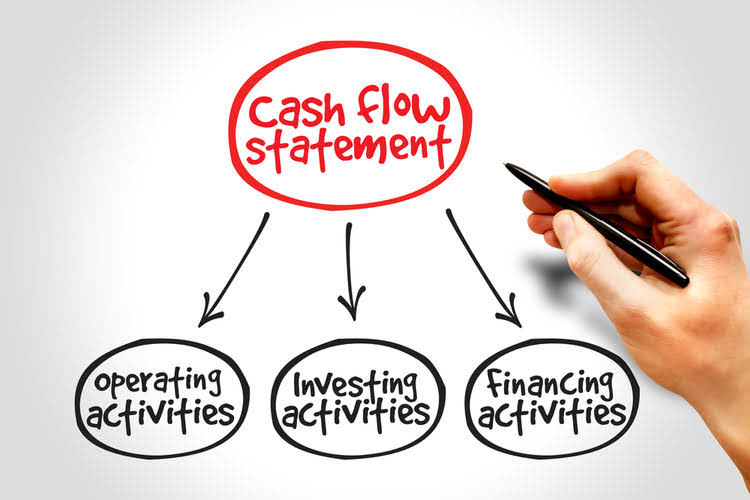
Get an overview of the statement of cash flows, which show cash sources and uses during a specific period of time. Factors that are used to convert future cash flows to their present value. The answer tells us that receiving $5,000 three years from today is the equivalent of receiving $3,942.45 today, if the time value of money has an annual rate of 8% that is compounded quarterly. The tables below show the number of periods (n) and the related interest rate (i) for four different compounding assumptions. The letter “n” refers to the length of time (in this case, two years).
Present Value Formula for a Future Value:
As you can see from the present value equation, a few different variables need to be estimated. The cash flow from one period is simply the amount of money that is received on a future date. The rate of return is the estimated annual interest rate that will be received in the future. The number of periods is simply the number of times the interest will compound over time.

Present Value Formula and Calculation
- Using the same 5% interest rate compounded annually, the answer is about $784.
- Additionally this is sometimes referred to as the present value annuity factor.
- Because of their widespread use, we will use present value tables for solving our examples.
- The table typically has interest rates running down the first column and the number of periods running across the top row.
- Present value of a future single sum of money is the value that is obtained when the future value is discounted at a specific given rate of interest.
- Just be sure to match the table type (annuity vs lump sum), frequency, and discount rate to the specifics of the financial instrument.
By using the net present value formula, management can estimate whether a potential project is worth pursuing and whether the company will make money on the deal. Take O’Reilly with you and learn anywhere, anytime on your pv single sum table phone and tablet. Additionally the present value of annuity table is available for download in PDF format by following the link below. Use the future value tables provided in Appendix 14.2 when needed, and round answers to the nearest cent where required. You can also estimate using the CAPM formula – Wisesheets can help with that by pulling data like beta and market returns. It connects Excel or Google Sheets directly to live financial data, so instead of hunting down numbers, you just pull them in with a formula.
Rate Table For the Present Value of an Annuity Due of 1
There are benefits to investing money now in hopes of a larger return in the future. These future earnings are possible because of interest payments received as an incentive for tying up money long-term. Knowing what these future earnings will be can help a business decide if the current investment is worth the long-term potential. Recall, the future value (FV) as the value of an investment after a certain period of time. Future value considers the initial amount invested, the time period of earnings, and the earnings interest rate in https://www.togetherproject.net/month-end-closing-checklist-for-purchase-ledger/ the calculation.

Future Value Tables
- Because you’re getting cash earlier, the values will always be slightly higher than the ordinary annuity table.
- The present value factor is the factor that is used to indicate the present value of cash to be received in the future and is based on the time value of money.
- To put it another way, the present value of receiving $100 one year from now is less than $100.
- It is also a good tool for choosing among potential investments, especially if they are expected to pay off at different times in the future.
- This table shows the future and present value of $1 over various time periods with interest rates ranging from 2% to 15%.
PV tables are used to provide a solution for the part of the present value formula shown in red, this is sometimes referred to as the present value factor. You can also use present value for professional purposes, such as accounting, investment analysis, and preparing for exams in finance and mathematics. It directly supports key topics like interest, business math, and percentages. For the past 52 years, Harold Averkamp (CPA, MBA) hasworked as an accounting supervisor, manager, consultant, university instructor, and innovator in teaching accounting online. A balance on the right side (credit side) of an account in the general ledger. For example, if $1,000 is deposited in an account earning interest of 6% per year the account will earn $60 in the first year.


If you don’t have access to an electronic financial calculator or software, an easy way to calculate present value amounts is to use present value tables (PV tables). PV tables cannot provide the same level of accuracy as financial calculators or computer software because the factors used in the tables are rounded off to fewer decimal places. In addition, they usually contain a limited number of choices for interest rates and time periods. Despite this, present value tables remain popular in academic settings because they are easy to incorporate into a textbook. Because of their widespread use, we will use present value tables for solving our examples. Sometimes the present value, the future value, and the interest rate for discounting are known, but the length of time before the future value occurs Accounts Receivable Outsourcing is unknown.
Leave a Reply